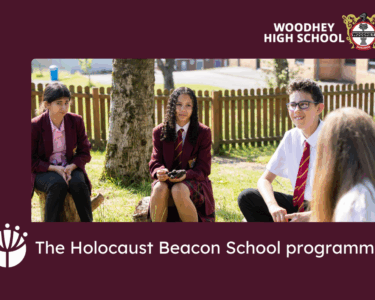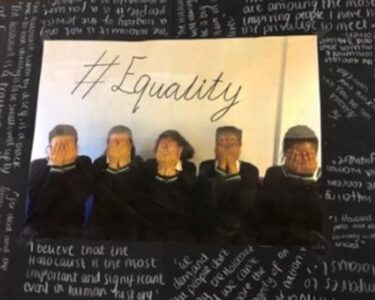From Francis McMahon, Lead Teacher at Woodhey High School
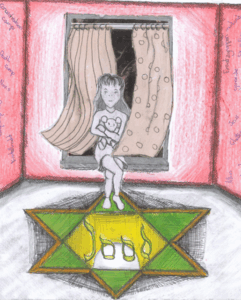 Alongside our History and RE schemes of learning on the Holocaust, we invited our Year 9 students to participate in an extended project that asked them to respond to the Holocaust not just as historians or philosophers, but as artists and creatives.
Alongside our History and RE schemes of learning on the Holocaust, we invited our Year 9 students to participate in an extended project that asked them to respond to the Holocaust not just as historians or philosophers, but as artists and creatives.
The brief was simple: create a piece of art – visual or literary – that responds to what you have learned in RE and History. It must be sensitive. It must tell a story. And above all, it must show compassion.
We had three aims with this project. Firstly, we wanted to provide a creative outlet through which students could process the emotional weight of their learning. Secondly, we wanted to give space for personal response – for students to take ownership of their engagement with this history. And finally, we wanted to reinforce the interdisciplinary nature of Holocaust education: that this is not the preserve of History departments alone, but a moral and spiritual challenge that reaches into RE, English, Art, and beyond.
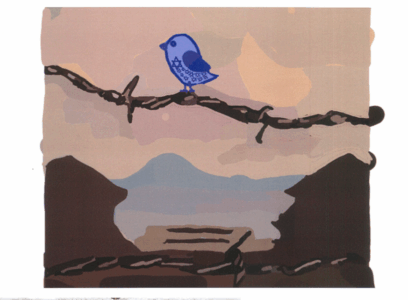 Our brilliant RE team did a fantastic job of preparing the students for this project. They reinforced that the project was not simply about producing something “beautiful” – though many pieces were. It was about exploring moral questions through artistic form. What does resistance look like? How do we remember the forgotten? Can colour convey compassion? Can silence be painted? What does the Holocaust mean to you, as a student, as an individual, as somebody living through the extraordinary today? In RE, we had already introduced students to the complexity of moral courage through the story of Chaim Rumkowski and explored the haunting ethical challenge of forgiveness through Simon Wiesenthal’s The Sunflower. The extended project gave students a chance to internalise these ideas – and to reflect, creatively, on the theological and philosophical questions they raise. Some students responded with charcoal sketches of faces; others drew swastikas being torn apart. Several students opted to produce digital media, app sketches, offering a 21st century take on the Holocaust, staff members wrote poetry. What united these diverse entries was a shared sense of seriousness. The students did not treat this as just another homework task. They treated it as a responsibility.
Our brilliant RE team did a fantastic job of preparing the students for this project. They reinforced that the project was not simply about producing something “beautiful” – though many pieces were. It was about exploring moral questions through artistic form. What does resistance look like? How do we remember the forgotten? Can colour convey compassion? Can silence be painted? What does the Holocaust mean to you, as a student, as an individual, as somebody living through the extraordinary today? In RE, we had already introduced students to the complexity of moral courage through the story of Chaim Rumkowski and explored the haunting ethical challenge of forgiveness through Simon Wiesenthal’s The Sunflower. The extended project gave students a chance to internalise these ideas – and to reflect, creatively, on the theological and philosophical questions they raise. Some students responded with charcoal sketches of faces; others drew swastikas being torn apart. Several students opted to produce digital media, app sketches, offering a 21st century take on the Holocaust, staff members wrote poetry. What united these diverse entries was a shared sense of seriousness. The students did not treat this as just another homework task. They treated it as a responsibility.
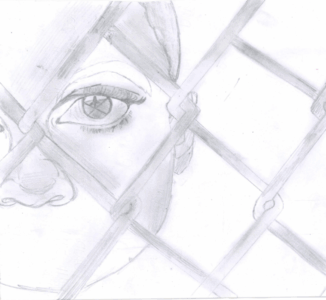
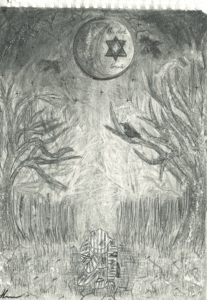 The submissions were extraordinary – not because they were polished, but because they were sincere. As we reflect on this extended project, what stands out most is the way students were able to move from intellectual engagement to emotional connection. Our RE scheme challenged them to ask difficult questions about morality and faith; this project allowed them to answer – not with certainty, but with empathy. We remain committed to integrating creative response into our RE and History curricula. The Holocaust is not a topic to be learned and forgotten. Our hope is that these pieces – created with such care, thoughtfulness, and integrity – continue to speak long after the marks are given, and we are delighted to be able to share some of them with UCL and the readers of this article.
The submissions were extraordinary – not because they were polished, but because they were sincere. As we reflect on this extended project, what stands out most is the way students were able to move from intellectual engagement to emotional connection. Our RE scheme challenged them to ask difficult questions about morality and faith; this project allowed them to answer – not with certainty, but with empathy. We remain committed to integrating creative response into our RE and History curricula. The Holocaust is not a topic to be learned and forgotten. Our hope is that these pieces – created with such care, thoughtfulness, and integrity – continue to speak long after the marks are given, and we are delighted to be able to share some of them with UCL and the readers of this article.


